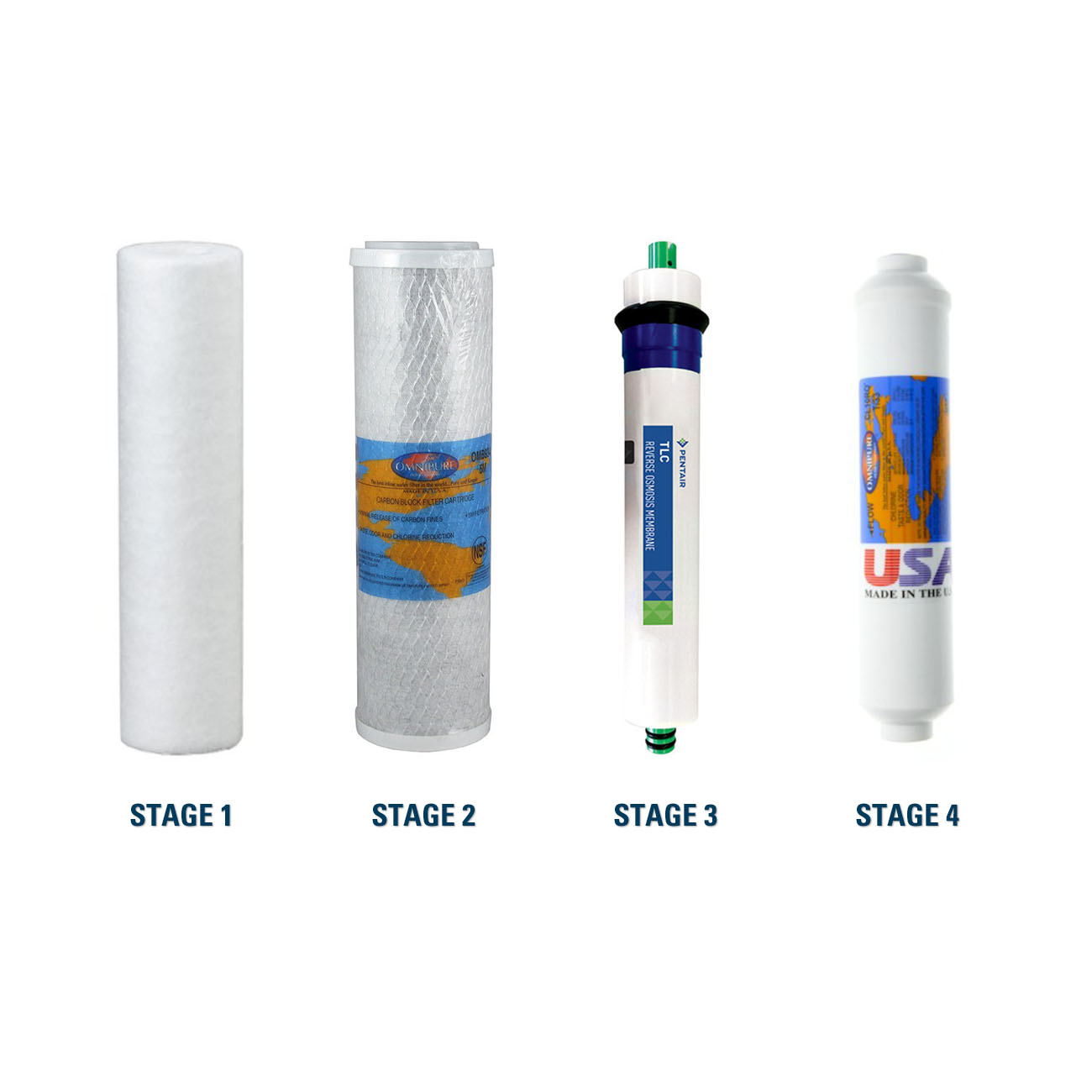Types of Reverse Osmosis Systems
What are the Types of Reverse Osmosis (RO) Systems
Reverse osmosis filter systems are available in various types to cater to different needs and applications including under-sink drinking water systems, whole house RO, restaurants, and light commercial manufacturing.
RO is becoming increasingly popular since it was developed in the late 1950s under U.S. Government funding, as a method of desalinating seawater.
Today, reverse osmosis (RO) water filtration is used throughout the world to effectively remove impurities found in water and is recognized as an effective method for improving the quality of water.
How Does the Reverse Omsosis Process Work?
Reverse osmosis pre-filtration incorporates sediment and carbon filtration and are designed to protect the delicate reverse osmosis membrane.
The RO membrane plays a crucial role in the effectiveness of reverse osmosis water filtration. The RO membrane is a semi-permeable barrier that allows water molecules to pass through while blocking the passage of larger molecules, ions, and particles.
Under-Sink Residential Reverse Osmosis (RO) Systems
With an under-sink RO system, you have purified water available on demand without the need to refill any pitchers or containers.
And using an under-sink RO system reduces plastic waste from single-use water bottles, making it a more environmentally friendly option.
Your RO system will provide a constant supply of clean, great-tasting, filtered water, convenient for drinking and cooking.
Why Choose Reverse Osmosis?
If you're searching for a water filtration system that will give you outstanding water. Here are a few reasons to consider RO:
Improves Taste
RO filtration improves taste, odor and appearance of water by removing contaminants that cause taste and odor problems.
Saves Money
With an RO system, you can cancel your water delivery service and stop purchasing cases of bottled water. Reverse Osmosis filtration provides “better-than-bottled water” quality water for just pennies per gallon.
Simple Maintenance
RO systems have very few moving or replaceable parts making RO systems easy to clean and service.
Removes Impurities
Reverse osmosis systems can reduce or remove common pollutants from water including nitrates, lead, pesticides, sulfates, fluoride, PFOS, pharmaceuticals, Arsenic V, and much more. A Reverse Osmosis systems’ carbon filter will also remove chlorine and chloramines.
Find Out Why Milions OF Households Have Reverse Osmosis Drinking Water Systems
Whole House Reverse Osmosis Systems
Please give us a call if you would a consultation to determine the most suitable water filtration system for your needs.
Commercial RO Systems
Commercial systems can be installed in a wall, floor or frame mounted configuration.
Reverse Osmosis Replacement Filters and Membranes
Commercial Reverse Osmosis (RO) Membranes
Expert Tip
If your RO system is getting older, there's an inexpensive way to upgrade your current reverse osmosis system and extend it's life for years to come. You can do this by installing an RO "retrofit" conversion kit.
Yes, rather than completely replacing your entire RO system, install a retrofit kit. Simply remove your old system and plug your existing faucet and RO tank into the conversion kit, and you'll be up and running in no time.






 We offer the most popular brands and types of replacement filters for both residential and commercial reverse osmosis systems. The range of filters includes those designed to mechanically remove sediment, particulates and even cysts; varieties of carbon filters to remove
We offer the most popular brands and types of replacement filters for both residential and commercial reverse osmosis systems. The range of filters includes those designed to mechanically remove sediment, particulates and even cysts; varieties of carbon filters to remove